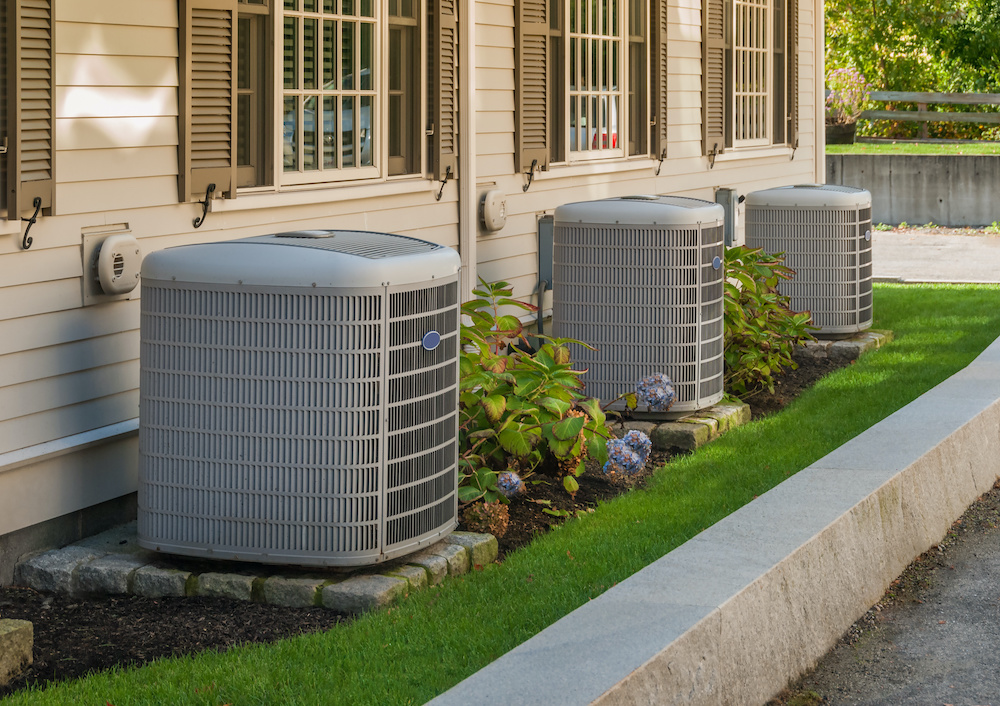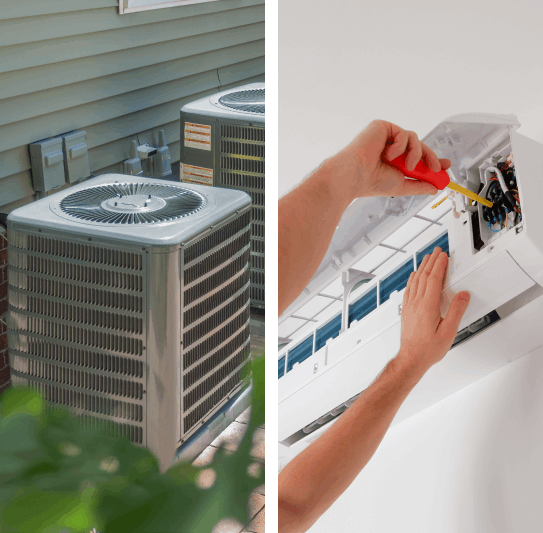
To define HVAC, it stands for heating, ventilation, and air conditioning, encompassing the systems that regulate indoor environments. Heating and air conditioning were once considered luxuries, but today, almost 90% of households in the US have some type of HVAC unit (Energy Institute). Over time, HVAC technology has evolved and improved, becoming increasingly more efficient and providing better comfort.
While many people enjoy the benefits of modern heating and cooling, they may not fully understand how the technology works. After all, it is a complex process! However, the more you learn about your HVAC system, the better you can appreciate it and take care of it.
In this post, we will go over the basic functions of HVAC technology, how it works, and how to maximize your system’s efficiency to keep your home comfortable.
WHAT IS HVAC TECHNOLOGY?
HVAC what is it? HVAC technology, which stands for heating, ventilation, and air conditioning, is the process of heating or cooling air and circulating it through an indoor area to maintain a desired temperature. Modern HVAC systems do much more than that, though. They also improve your indoor air quality by filtering out pollutants and controlling humidity levels.
Various types of HVAC units work differently, but the most basic function of any HVAC system is to move heat from one area to another. For example, in the summer, your system will remove heat from your home and expel it outdoors, therefore cooling the indoor air. In the winter, heat is added back into your home to warm it up.
It may sound simple, but all of the components involved in this process are a bit more complex. Let’s dive in a little deeper.
HOW DOES HVAC TECHNOLOGY WORK?
To understand the workings of the HVAC technology in your home, you must first know what type of system you have. We will go over a few different types and explain how each component works together as a whole.
AIR CONDITIONER
One of the most common types of cooling systems is the standard air conditioner, or the boxy unit that sits outside. It is made up of three main components, which are the compressor, condenser coil, and evaporator coil (Carrier).
First, the compressor pumps a chemical compound called refrigerant into the evaporator coils. Then, a fan pulls warm air from your home into the unit and forces it over the evaporator coils. The refrigerant in the coils absorbs the heat from the air to cool it down. Finally, a blower sends the cool air back into your home through the air ducts and blows it out through the vents (US News).
Meanwhile, the refrigerant that absorbs the heat evaporates, or is converted from liquid to gas. It is carried back through the compressor to be pressurized, then it is sent to the condenser coil where it is condensed back into a liquid, and the heat is expelled to the outdoors through a fan (Carrier). This cycle continues until enough cool air has been blown into the home to reach the desired temperature.
FURNACE
A furnace is used for heating, and it is often paired with an air conditioner to complete the HVAC system. Furnaces typically use an energy source such as natural gas or propane fuel to generate heat.
When the furnace begins its process, the fuel reacts with oxygen to burn and release combustion gas. This gas then enters a heat exchanger where it is converted to heat (Carrier). The more efficient your furnace is, the more heat that is generated from the gas. Lastly, a blower pushes the heat through the ductwork and out of the vents to warm up your home (Trane).
HEAT PUMP
Another very common type of HVAC unit is a heat pump. Much like air conditioners, heat pumps are boxy units that can be found outside your home, but they are unique because they control both heating and cooling. The cooling mechanism uses refrigerant and works in the same way as an air conditioner.
However, when the heat is turned on, the process is simply reversed. Instead of pulling warm air from inside your home, it pulls it from the outdoors. The refrigerant absorbs the heat and sends it into your home through the ductwork (Trane).
As you might imagine, the colder it is outside, the more difficult it will be to extract heat from the air. For this reason, heat pumps are not as efficient in areas where winter temperatures routinely drop below freezing. However, when paired with a furnace, heat pumps provide significant energy savings.
AIR HANDLER
Air handlers work in conjunction with your furnace, air conditioner, or heat pump to push air through your ductwork and into your home. These units typically contain the indoor coil that absorbs heat and the blower that pushes the air through the ducts (Trane).
AIR DUCTS
Not all HVAC systems have air ducts, such as ductless mini splits and window units. However, most central air systems utilize ductwork that carries the air from your air handler to the air vents in each room. Air ducts are the most efficient when they are installed properly, well-sealed and insulated, and the right size for your home (Energy.gov). The EPA also recommends getting your ducts cleaned if they contain mold or are clogged with dust and debris.
AIR VENTS
You will find two types of vents throughout your home, and they have different functions. The smaller ones found in each room are the ones that release air into your home to warm or cool it.
The larger ones that contain your air filters are the return vents, where the air in your home gets pulled back into your system. Keep in mind changing your air filters frequently will allow air to flow more freely through these vents, allowing your system to perform more efficiently.
THERMOSTAT
At the center of it all, your thermostat controls your HVAC system by measuring the temperature in the room and telling your system when to turn on or off. There are various types of thermostats with different mechanisms to control this process, but they all work by way of an electrical circuit (explainthatstuff.com).
Many modern thermostats have programmable settings and even smart controls that connect with your mobile devices. These smart thermostats can provide better comfort and energy savings along with many other benefits.
Learn More
If you are interested in learning more about HVAC technology and the types of systems that will work best for your home, contact our heating and cooling experts at Eagle Air Conditioning. We provide repairs, installations, and replacements of residential and commercial heating and cooling systems across the Tri-Valley and Central Valley areas, and our technicians specialize in handling all makes and models.
You may also want to check out our other blog posts where you can read about HVAC safety, maintenance, costs and savings, and more.
Contact us today at 925-443-2665.





